Related Research Articles

The Lomonosov Gold Medal, named after Russian scientist and polymath Mikhail Lomonosov, is awarded each year since 1959 for outstanding achievements in the natural sciences and the humanities by the USSR Academy of Sciences and later the Russian Academy of Sciences (RAS). Since 1967, two medals are awarded annually: one to a Russian and one to a foreign scientist. It is the academy's highest accolade.
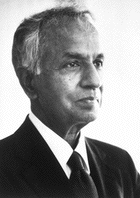
Subrahmanyan Chandrasekhar was an Indian-American theoretical physicist who spent his professional life in the United States. He shared the 1983 Nobel Prize for Physics with William A. Fowler for "...theoretical studies of the physical processes of importance to the structure and evolution of the stars". His mathematical treatment of stellar evolution yielded many of the current theoretical models of the later evolutionary stages of massive stars and black holes. Many concepts, institutions, and inventions, including the Chandrasekhar limit and the Chandra X-Ray Observatory, are named after him.
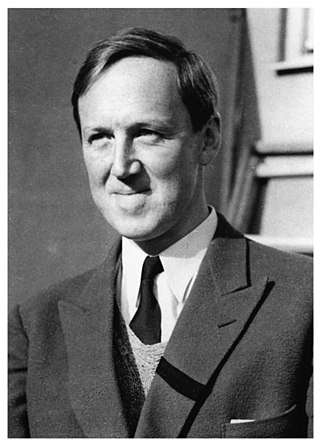
Hannes Olof Gösta Alfvén was a Swedish electrical engineer, plasma physicist and winner of the 1970 Nobel Prize in Physics for his work on magnetohydrodynamics (MHD). He described the class of MHD waves now known as Alfvén waves. He was originally trained as an electrical power engineer and later moved to research and teaching in the fields of plasma physics and electrical engineering. Alfvén made many contributions to plasma physics, including theories describing the behavior of aurorae, the Van Allen radiation belts, the effect of magnetic storms on the Earth's magnetic field, the terrestrial magnetosphere, and the dynamics of plasmas in the Milky Way galaxy.
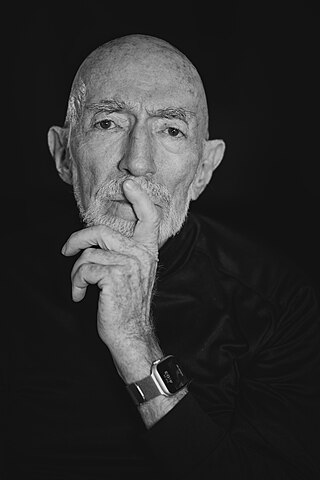
Kip Stephen Thorne is an American theoretical physicist known for his contributions in gravitational physics and astrophysics.

The American Astronomical Society is an American society of professional astronomers and other interested individuals, headquartered in Washington, DC. The primary objective of the AAS is to promote the advancement of astronomy and closely related branches of science, while the secondary purpose includes enhancing astronomy education and providing a political voice for its members through lobbying and grassroots activities. Its current mission is to enhance and share humanity's scientific understanding of the universe as a diverse and inclusive astronomical community.

Lyman Spitzer Jr. was an American theoretical physicist, astronomer and mountaineer. As a scientist, he carried out research into star formation, plasma physics, and in 1946, conceived the idea of telescopes operating in outer space. Spitzer invented the stellarator plasma device and is the namesake of NASA's Spitzer Space Telescope. As a mountaineer, he made the first ascent of Mount Thor, with Donald C. Morton.
Sir David Robert Bates was a Northern Irish mathematician and physicist.
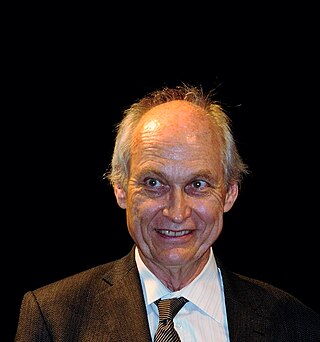
Michael S. Turner is an American theoretical cosmologist who coined the term dark energy in 1998. He is the Rauner Distinguished Service Professor Emeritus of Physics at the University of Chicago, having previously served as the Bruce V. & Diana M. Rauner Distinguished Service Professor, and as the assistant director for Mathematical and Physical Sciences for the US National Science Foundation.

Eugene Newman Parker was an American solar and plasma physicist. In the 1950s he proposed the existence of the solar wind and that the magnetic field in the outer Solar System would be in the shape of a Parker spiral, predictions that were later confirmed by spacecraft measurements. In 1987, Parker proposed the existence of nanoflares, a leading candidate to explain the coronal heating problem.

Yousef Sobouti is a contemporary Iranian astrophysicist, theoretical physicist.
Eric Ronald Priest is Emeritus Professor at St Andrews University, where he previously held the Gregory Chair of Mathematics and a Bishop Wardlaw Professorship.
Michael John Seaton was an influential British mathematician, atomic physicist, and astronomer.

Rodney James Baxter FRS FAA is an Australian physicist, specialising in statistical mechanics. He is well known for his work in exactly solved models, in particular vertex models such as the six-vertex model and eight-vertex model, and the chiral Potts model and hard hexagon model. A recurring theme in the solution of such models, the Yang–Baxter equation, also known as the "star–triangle relation", is named in his honour.

Alexander Dalgarno FRS was a British physicist who was a Phillips Professor of Astronomy at Harvard University.

Kenneth Charles Freeman is an Australian astronomer and astrophysicist who is currently Duffield Professor of Astronomy in the Research School of Astronomy and Astrophysics at the Mount Stromlo Observatory of the Australian National University in Canberra. He was born in Perth, Western Australia in 1940, studied mathematics and physics at the University of Western Australia, and graduated with first class honours in applied mathematics in 1962. He then went to Cambridge University for postgraduate work in theoretical astrophysics with Leon Mestel and Donald Lynden-Bell, and completed his doctorate in 1965. Following a postdoctoral appointment at the University of Texas with Gérard de Vaucouleurs, and a research fellowship at Trinity College, Cambridge, he returned to Australia in 1967 as a Queen Elizabeth Fellow at Mount Stromlo. Apart from a year in the Kapteyn Institute in Groningen in 1976 and some occasional absences overseas, he has been at Mount Stromlo ever since.

James Jeffrey Binney, FRS, FInstP is a British astrophysicist. He is a professor of physics at the University of Oxford and former head of the Sub-Department of Theoretical Physics as well as an Emeritus Fellow of Merton College. Binney is known principally for his work in theoretical galactic and extragalactic astrophysics, though he has made a number of contributions to areas outside of astrophysics as well.

Steven Andrew Balbus is an American-born astrophysicist who is the Savilian Professor of Astronomy at the University of Oxford and a professorial fellow at New College, Oxford. In 2013, he shared the Shaw Prize for Astronomy with John F. Hawley.
Bimla Buti is an Indian physicist and specializes in the field of plasma physics. She was the first Indian woman Physicist Fellow of Indian National Science Academy(INSA). In 1994, she was awarded INSA-Vainu Bappu Award.
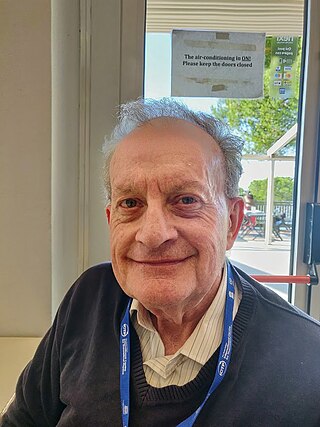
Professor Bruce Harold John McKellar is an Australian theoretical particle physicist who is Honorary Professorial Fellow at the Centre of Excellence for Particle Physics at the Terascale (CoEPP) in the School of Physics at The University of Melbourne. The International Union of Pure and Applied Physics (IUPAP) elected him as its President-Designate in 2012. In November 2014 McKellar became President of IUPAP, the first-ever Australian to take on this role.
Peter David Drummond is a physicist and distinguished professor in the Centre for Quantum and Optical Science at Swinburne University of Technology.
References
- ↑ Melrose, Donald B. (2008). Quantum Plasmadynamics. Lecture Notes in Physics. Vol. 735. doi:10.1007/978-0-387-73903-8. ISBN 978-0-387-73902-1. ISSN 0075-8450.
- ↑ Melrose, Donald (2013). Quantum Plasmadynamics. Lecture Notes in Physics. Vol. 854. doi:10.1007/978-1-4614-4045-1. ISBN 978-1-4614-4044-4. ISSN 0075-8450.
- ↑ "S. Chandrasekhar Prize of Plasma Physics". Association of Asia Pacific Physical Societies.
- ↑ "The Australian Institute of Physics - HARRIE MASSEY MEDAL". www.aip.org.au. Retrieved 25 October 2023.
- ↑ "Ellery Lectureship | Astronomical Society of Australia" . Retrieved 25 October 2023.
- ↑ Falconia Bulletin No 15 of 1995 page 3
- ↑ Who's Who in Australia 2019 page 1158
- ↑ McLean, D. J.; Labrum, N. R., eds. (1985). Solar Radiophysics. Cambridge: Cambridge University Press. p. 476. ISBN 0-521-25409-4.
- 1 2 Rosanne Walker. "Melrose, Donald Blair (1940 - )". Encyclopedia of Australian Science. Retrieved 13 May 2012.